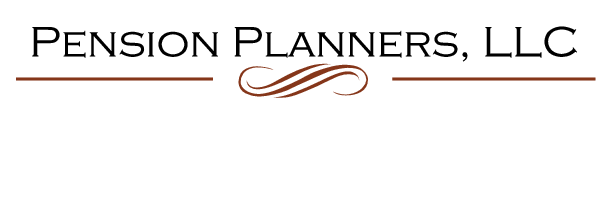Copyright 2012: Pension Planners, LLC. Pension Planners. All rights reserved.
4168 Douglas Blvd., Ste. 300 Granite Bay, CA 95746 916-791-9095
Learning Resource Center
At Pension Planners, we believe knowledge is your greatest asset.
The information below will provide you with a solid understanding of retirement terms and concepts.
GLOSSARY
401(k) PLAN - In this type of defined contribution plan, the employee can make contributions from his or her paycheck before taxes are taken out. The contributions go into a 401(k) account, with the employee often choosing the investments based on options provided under the plan. In some plans, the employer also makes contributions, matching the employee’s contributions up to a certain percentage. SIMPLE and Safe Harbor 401(k) plans have additional employer contribution and vesting requirements.
BENEFIT ACCRUAL - The amount of benefits accumulated under the plan.
CASH BALANCE PLAN – A type of defined benefit plan that includes some elements that are similar to a defined contribution plan because the benefit amount is computed based on a formula using contribution and earning credits, and each participant has a hypothetical account. Cash balance plans are more likely than traditional defined benefit plans to make lump sum distributions.
DEFINED BENEFIT PLAN – This type of plan, also known as the traditional pension plan, promises the participant a specified monthly benefit at retirement. Often, the benefit is based on factors such as your salary, your age, and the number of years you worked for the employer.
DEFINED CONTRIBUTION PLAN – In a defined contribution plan, the employee and/or the employer contribute to the employee’s individual account under the plan. The employee often decides how their accounts are invested. The amount in the account at distribution includes the contributions and investment gains or losses, minus any investment and administrative fees. The contributions and earnings are not taxed until distribution. The value of the account will change based on the value and performance of the investments.
EMPLOYEE RETIREMENT INCOME SECURITY ACT OF 1974 (ERISA) - A Federal law that sets standards of protection for individuals in most voluntarily established, private-sector retirement plans. ERISA requires plans to provide participants with plan information, including important facts about plan features and funding; sets minimum standards for participation, vesting, benefit accrual, and funding; provides fiduciary responsibilities for those who manage and control plan assets; requires plans to establish a claims and appeals process for participants to get benefits from their plans; gives participants the right to sue for benefits and breaches of fiduciary duty; and, if a defined benefit plan is terminated, guarantees payment of certain benefits through a federally chartered corporation, known as the Pension Benefit Guaranty Corporation (PBGC).
EMPLOYEE STOCK OWNERSHIP PLAN (ESOP) – A Type of defined contribution plan that is invested primarily in employer stock.
INDIVIDUAL BENEFIT STATEMENT – An individual benefit statement provide information about a participant’s retirement benefits, such as the total plan benefits earned and vested benefits, on a periodic basis. Additional information may be included depending upon the type of plan, such as how a 401(k) plan account is invested.
INDIVIDUAL RETIREMENT ACCOUNT (IRA) – An individual account set up with a financial institution, such as a bank or a mutual fund company. Under Federal law, individuals may set aside personal savings up to a certain amount, and the investments grow, tax deferred. In addition, defined contribution plan participants can transfer money from an employer retirement plan to an IRA when leaving an employer. IRA’s also can be part of an employer plan.
MONEY PURCHASE PLAN – A money purchase plan requires set annual contributions from the employer to individual accounts and is subject to other rules.
MULTIEMPLOYER PLAN – A retirement plan sponsored by several employers under collective bargaining agreements that meet certain other requirements. A participant who changes jobs from one sponsoring employer to another stays within the same plan.
PLAN ADMINISTRATOR – The person who is identified in the plan document as having responsibility for running the plan. It could be the employer, a committee of employees, a company executive, or someone hired for that purpose.
PLAN DOCUMENT – A written instrument under which the plan is established and operated.
PLAN FIDUCIARY – Anyone who exercises discretionary authority or discretionary control over management or administration of the plan, exercises any authority or control over management or disposition of plan assets, or gives investment advice for a fee or other compensation with respect to assets of the plan.
PLAN TRUSTEE – Someone who has the exclusive authority and discretion to manage and control the assets of the plan. The trustee can be subject to the direction of a named fiduciary and the named fiduciary can appoint one or more investment managers for the plan’s assets.
PLAN YEAR - A 12 month period designated by a retirement plan for calculating vesting and distribution, among other things. The plan year can be the calendar year or an alternative period, e.g., July 1 to June 30.
PROFIT SHARING PLAN – A profit sharing plan allows the employer each year to determine how much to contribute to the plan (out of profits or otherwise) in cash or employer stock. The plan contains a formula for allocating the annual contribution amount the participants.
ROLLOVER - A rollover occurs when a participant leaves an employer and directs the defined contribution plan to transfer the money in his account to a new plan or individual retirement account. This preserves the benefits and does not trigger any tax consequences if done in a timely manner.
SAFE HARBOR 410(k) – A safe harbor 401(k) is similar to a traditional 401(k) plan, but the employer is required to make contributions for each employee. The employer contributions in Safe Harbor 401(k) plans are immediately 100 percent vested. The Safe Harbor 401(k) eases administrative burdens on employers by eliminating some of the complex tax rules ordinarily applied to traditional 401(k) plans.
SAVINGS INCENTIVE MATCH PLAN FOR EMPLOYEES OF SMALL EMPLOYERS (SIMPLE) – A plan in which a small business with 100 or fewer employees can offer retirement benefits through employee salary reductions and matching contributions (similar to those found in a 401(k) plan). It can be either a SIMPLE IRA or a SIMPLE 401(k). SIMPLE IRA plans impose few administrative burdens on employers because IRA’s are owned by the employees and the bank or financial institution receiving the funds does most of the paperwork. While each has some different features, including contribution limits and the availability of loans, required employer contributions are immediately 100 percent vested in both.
SIMPLIFIED EMPLOYEE PENSION PLAN (SEP) - A plan in which the employer makes contributions on a tax-favored basis to individual retirement accounts (IRAs) owned by the employees. If certain conditions are met, the employer is not subject to the reporting and disclosure requirements of most retirement plans. Under a SEP, an IRA is set up by or for an employee to accept the employer’s contributions.
SUMMARY PLAN DESCRIPTION – A document provided by the plan administrator that includes a plain language description of important features of the plan, e.g., when employees begin to participate in the plan, how service and benefits are calculated, when benefits become vested, when payment is received and in what form, and how to file a claim for benefits. Participants must be informed of material changes either through a revised Summary Plan Description or in a separate document called a Summary of Material Modifications.
VESTED BENEFITS – Those benefits that the individual has earned a right to receive and that cannot be forfeited.
YEARS OF SERVICE – The time an individual has worked in a job covered by the plan. It is used to determine when an individual can participate and vest and how they can accrue benefits in the plan.
Source: U.S. Department of Labor
Pension Planners, LLC
2250 Douglas Blvd. Suite 160
Roseville, CA 95661
Phone: 866-485-7929
4381 W. Flamingo Rd #38307
Las Vegas, NV 89103









